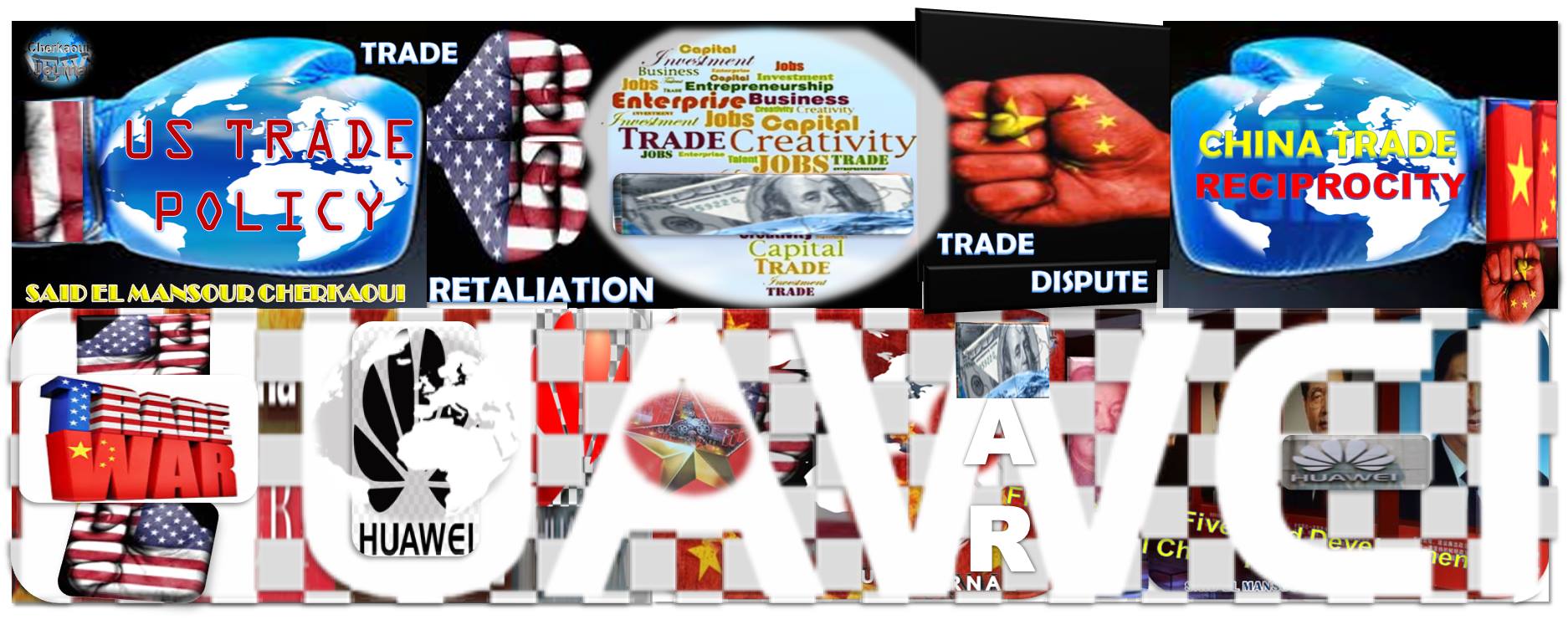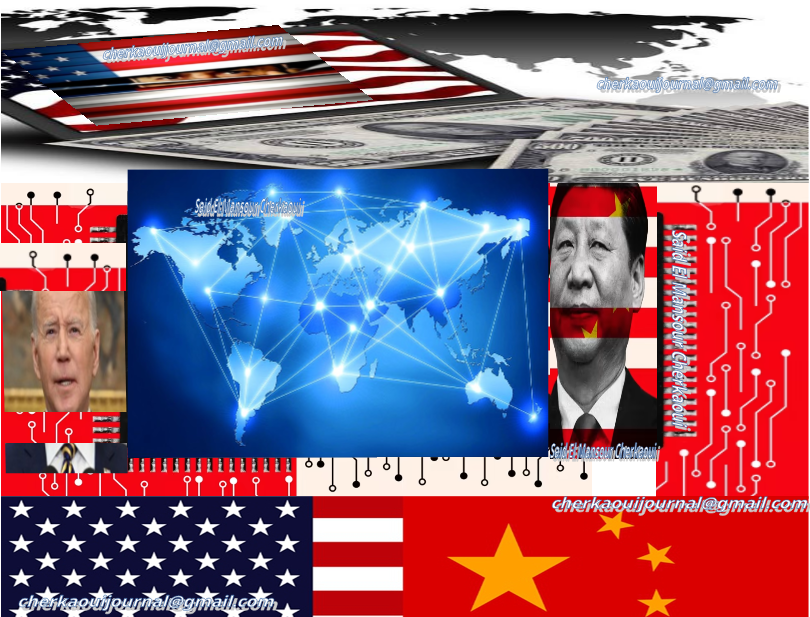Behind these sectors, you have every aspect of industrial productivity and supply chain management that is feeding all sectors from the automotive to the apparel industry and what is between the two: every single aspect of the robotic, logistic, and other directly related computerized systems of operation and production if not organizing the flow between all these sectors.
Touching upon a critical aspect of the tech industry, particularly in the United States. The U.S. government recognizes the importance of semiconductor supply chains. The CHIPS for America investments aim to strengthen these chains and enhance resilience.
The pandemic exposed vulnerabilities in the supply chain, emphasizing the need for strategic investments. The Biden administration contemplates a Huawei-caliber ban on China’s access to technology that fuels its supercomputing, data center, and AI industrialization. The sweeping export ban will include all global companies that procure US technology, software, or equipment in their semiconductors.
Tech War – US-China Proxy Tech Conflict
More US semiconductor restrictions loom for China. The United States government is expected to impose more semiconductor restrictions on China, after banning Nvidia and Advanced Micro Devices (AMD) from selling advanced chips used for artificial intelligence and high-performance computing work to the world’s second-largest economy.
More US semiconductor restrictions loom for China
The United States government is expected to impose more semiconductor restrictions on China, after banning Nvidia and Advanced Micro Devices (AMD) from selling advanced chips used for artificial intelligence and high-performance computing work to the world’s second-largest economy.
“We believe the next risky areas are autonomous driving chips from Nvidia, Intel-owned Mobileye, and Qualcomm,” the Jefferies report said. It indicated that chips used for self-driving vehicles could arguably be used for military applications.
“Worst of all, high-end CPUs from Intel and AMD [could follow],” the report said. It pointed out that high-end central processing units based on 7-nanometre or 5-nm semiconductor manufacturing processes “are key to a wide range of applications”, including cloud computing servers, 5G base stations, personal computers, and high-end military equipment.
“The worst-case scenario is for the US to subject all Chinese companies to the Direct Product Rule, which means no [semiconductor] foundries would be allowed to supply Chinese integrated circuit design firms, including Chinese foundries,” the report said.
“We are not there yet, and the US will likely evaluate the effectiveness of each incremental step before more drastic action is considered.”
The potential actions that the US could initiate reflect the urgency faced by China in safeguarding its hi-tech industries, especially its semiconductor sector.
The latest chip restrictions follow US export controls on technologies for the production of advanced semiconductors and gas turbine engines announced last month by the Bureau of Industry and Security, an agency under the US Department of Commerce.
The US tech export controls escalated Washington’s efforts to boost America’s hi-tech advantage over China after US President Joe Biden signed into law the Chips and Science Act that earmarks nearly US$53 billion in incentives for semiconductor manufacturing on US soil.
In July, Washington intensified its push to form the so-called Chip 4 Alliance – a partnership that includes South Korea, Taiwan, and Japan.
Beijing considers that alliance as a plot by the US government to exclude China from global semiconductor supply chains.
Meanwhile, the Chinese government’s likely response to the Nvidia and AMD bans is to accelerate the adoption of local products as substitutes, according to Jefferies analysts. They also expected the affected companies, which include internet firms and communications service providers, to use multiple lower-end Nvidia graphics processing units, which are not banned, to somehow replicate the processing power of the now-restricted chips. Large semiconductor supply chain projects, including materials and manufacturing equipment facilities, are being funded with capital investments exceeding $300 million along with Smaller projects are also part of the plan to bolster the industry
Department of Commerce Announces Strategic Vision and Application Process for Semiconductor Supply Chain Projects, Nearly 400 Companies Interested in CHIPS Incentives
“Today, the U.S. Department of Commerce shared the Biden-Harris Administration’s strategic vision to strengthen the semiconductor supply chain through CHIPS for America investments. To advance this vision, the Department announced a funding opportunity and application process for large semiconductor supply chain projects and will release later in the fall a separate process for smaller projects. Large semiconductor supply chain projects include materials and manufacturing equipment facility projects with capital investments equal to or exceeding $300 million, and smaller projects are below that threshold.” 1.
The goal is to advance U.S. technology leadership by incentivizing major U.S. manufacturing equipment and materials suppliers by encouraging these suppliers to increase their presence within the United States. In parallel, the U.S. Government seeks also to attract non-U.S. suppliers of advanced equipment, materials, and subsystems to establish large-scale footprints here contributes to leadership. 1. This strategy of integration aims to create clusters for Each CHIPS-funded production to be backed by an ecosystem of reliable suppliers. Such clustering within the United States will also stimulate innovation, economic growth, and job creation while allowing the United States to acquire and build robust support for these fab clusters, the U.S. aims to maintain its competitive edge in the global tech landscape1.
On Monday, August 5, 2024, U.S. Secretary of Commerce Gina Raimondo convened a roundtable discussion with investors to discuss non-market actions from the People’s Republic of China (PRC) that threaten to distort the market for mature node (or “legacy”) semiconductors. Secretary Raimondo emphasized her concern that over the past few years, the U.S. has seen signs of concerning practices from the PRC to overproduce legacy chips and prevent U.S. companies, and those in like-minded countries, from competing on a level playing field. The Secretary underscored that securing the semiconductor supply chain is an economic and national security priority and reiterated the actions that the Department of Commerce—and the whole federal government—are taking. Those actions include imposing targeted tariffs on semiconductors imported from the PRC, an industrial base survey of the U.S. semiconductor supply chain, joint efforts with international partners, and restrictions on the use of PRC semiconductors in U.S. government procurement. Investors discussed how companies are thinking about oversupply and overconcentration risk, and how additional U.S. government actions could most effectively support resilient semiconductor supply chains. Source
The collaboration between government, industry, and research institutions is pivotal for sustained growth and technological advancement. This extends beyond semiconductors to impact various sectors, from automotive to apparel, and everything in between. 2 3.
The US currently leads in the global semiconductor industry, but China is making progress and the competition is impacting the world economy. The US dominates the value chain by 39%, while China controls 7% of the global chip market.
However, China is building more semiconductor plants than any other country and is working on domestic alternatives to advanced silicon.
China Is Losing the Chip War – Propaganda or Misinformation?


Jun 6, 2024 — In semiconductors, however, China still lags. American companies command half o…
The escalating chip war between China and the West – GIS Reports
Apr 29, 2024 — Industry experts believe that China has the technical know-how to produce adva…
Some say that China will continue to make progress but fall further behind as Western firms race ahead. Others say that China is years behind or on the verge of catching up. The conflict is likely to leave its mark on the world economy, and the IMF urges its resolution.
Chip Technology Spending Gets $81 Billion Boost in China Rivalry
May 12, 2024 — China’s Building Boom … and Broadcom Inc. lead the world in the design of chips …
Tech titans clash: Inside the US-China battle for chip market …
May 9, 2024 — This clash between the two great powers will undoubtedly leave its mark on the …
Here’s a breakdown of the competition:
- TechnologyThe US leads in frontier technology, with Nvidia’s AI chip being 16 times faster than Huawei’s. However, some say China is at the forefront of carbon and photonic chip technology, where the US is behind.
- ProductionThe US has a 10% global share of production, but China is building more semiconductor plants than any other country. Some say China cannot scale up production of advanced chips.
- RegulationsIn 2022, the US banned the export of advanced chips and the equipment used to make them to China.
- GoalsChina aims to become a technology powerhouse and reduce its dependence on foreign technology. The US aims to boost domestic chip production with the CHIPS and Science Act, which allocates $52.7 billion over five years.
- Economic impactThe IMF estimates that eliminating high-tech trade between the US and China could cost the global economy $1 trillion annually.


